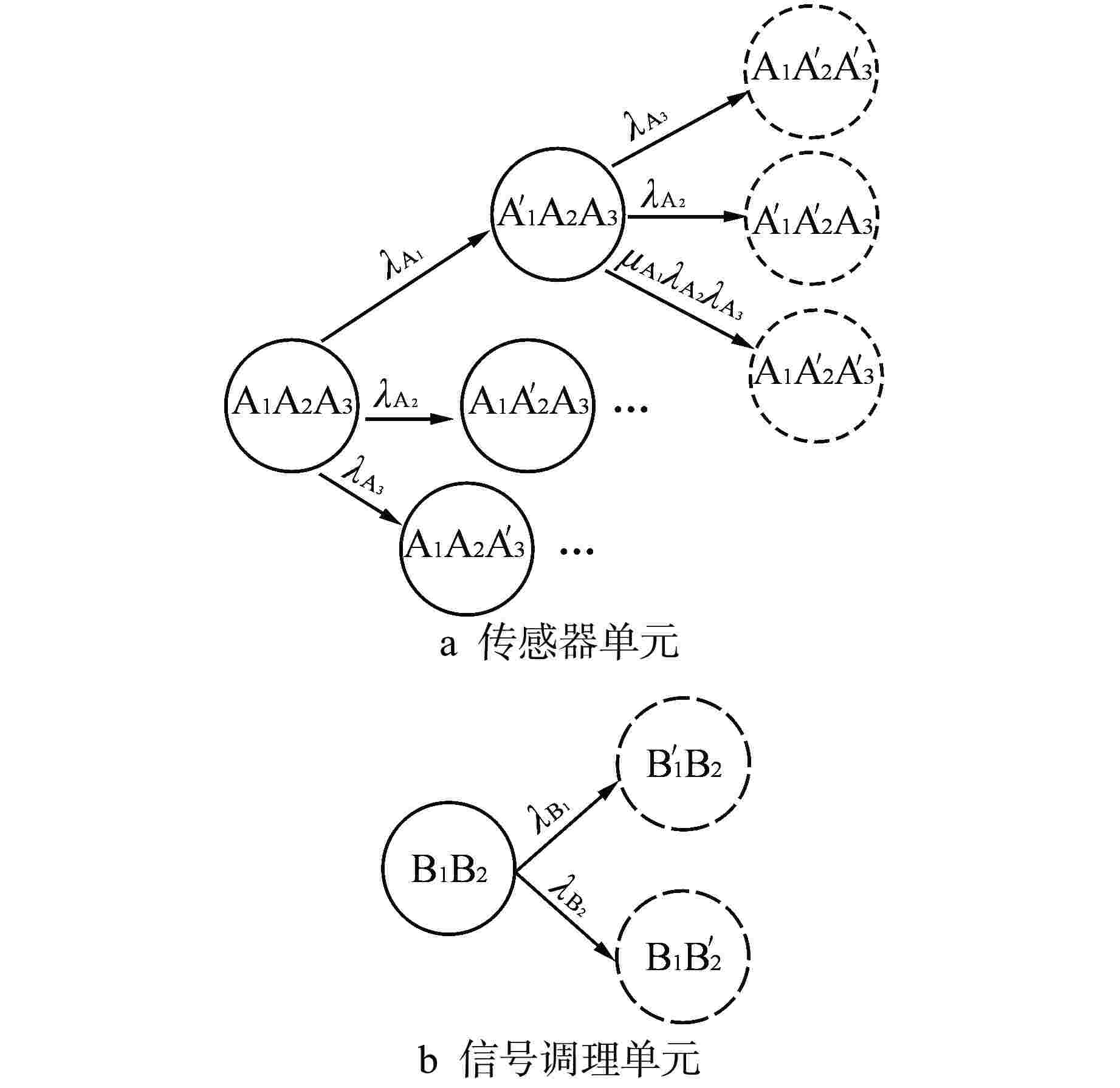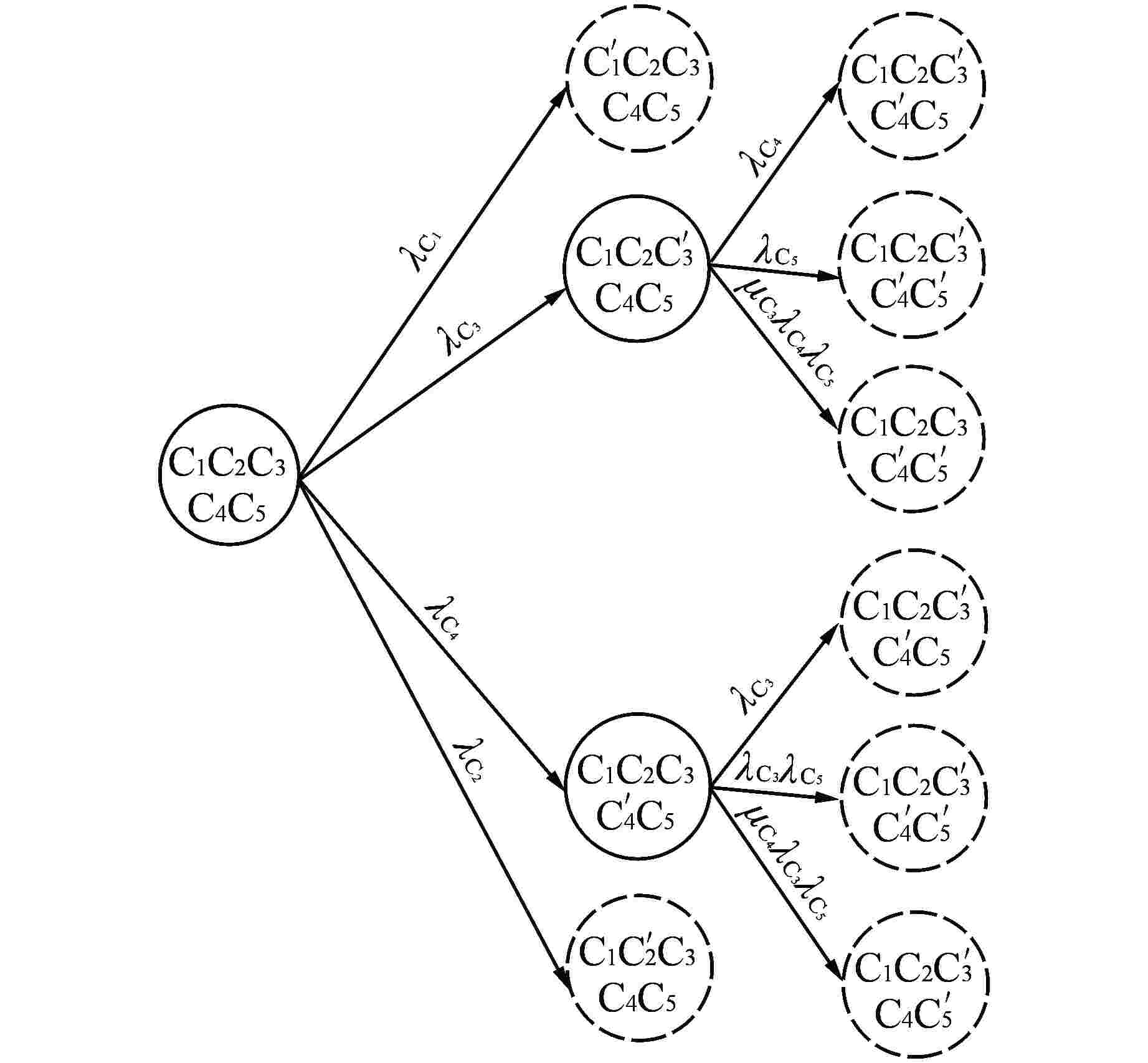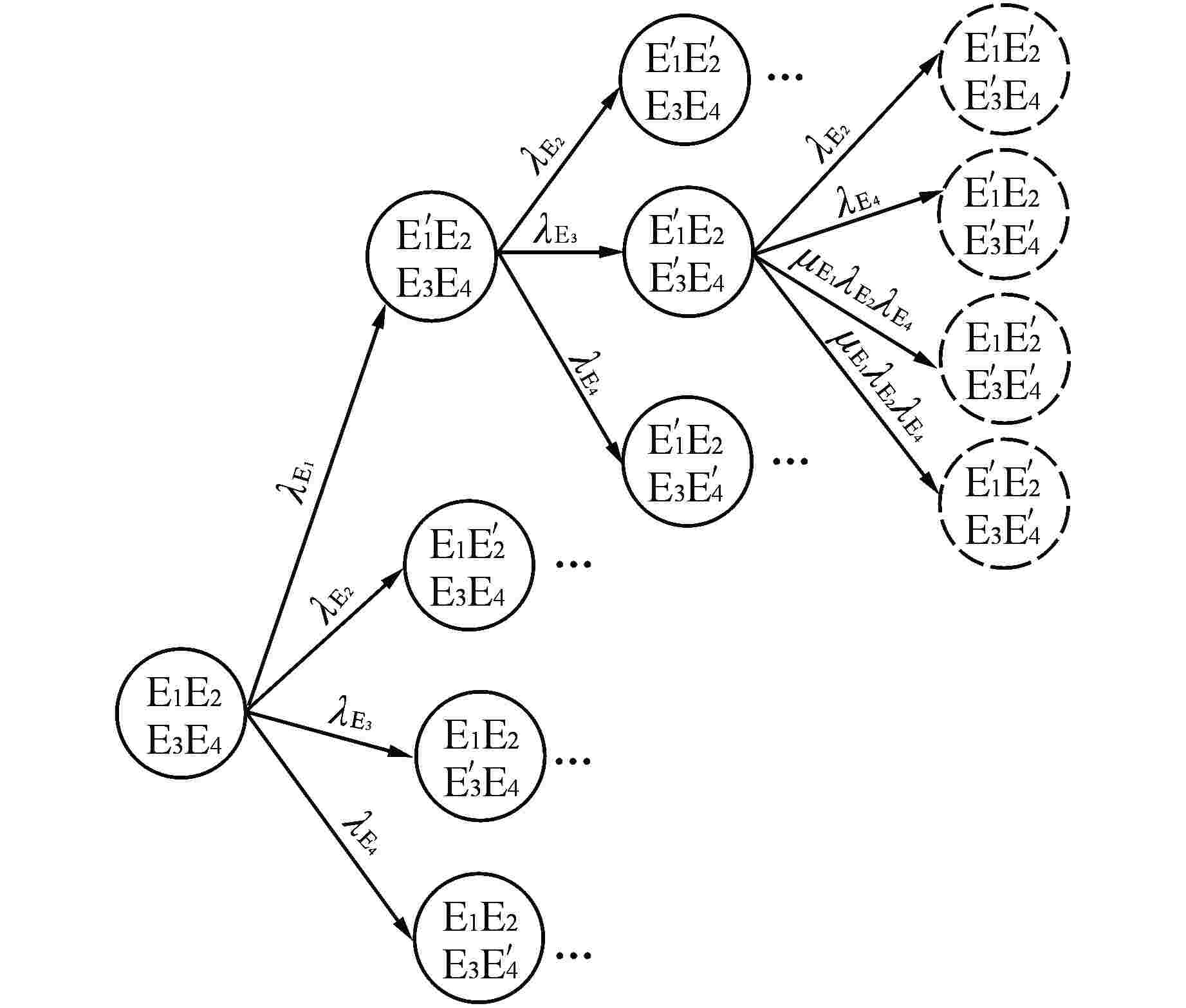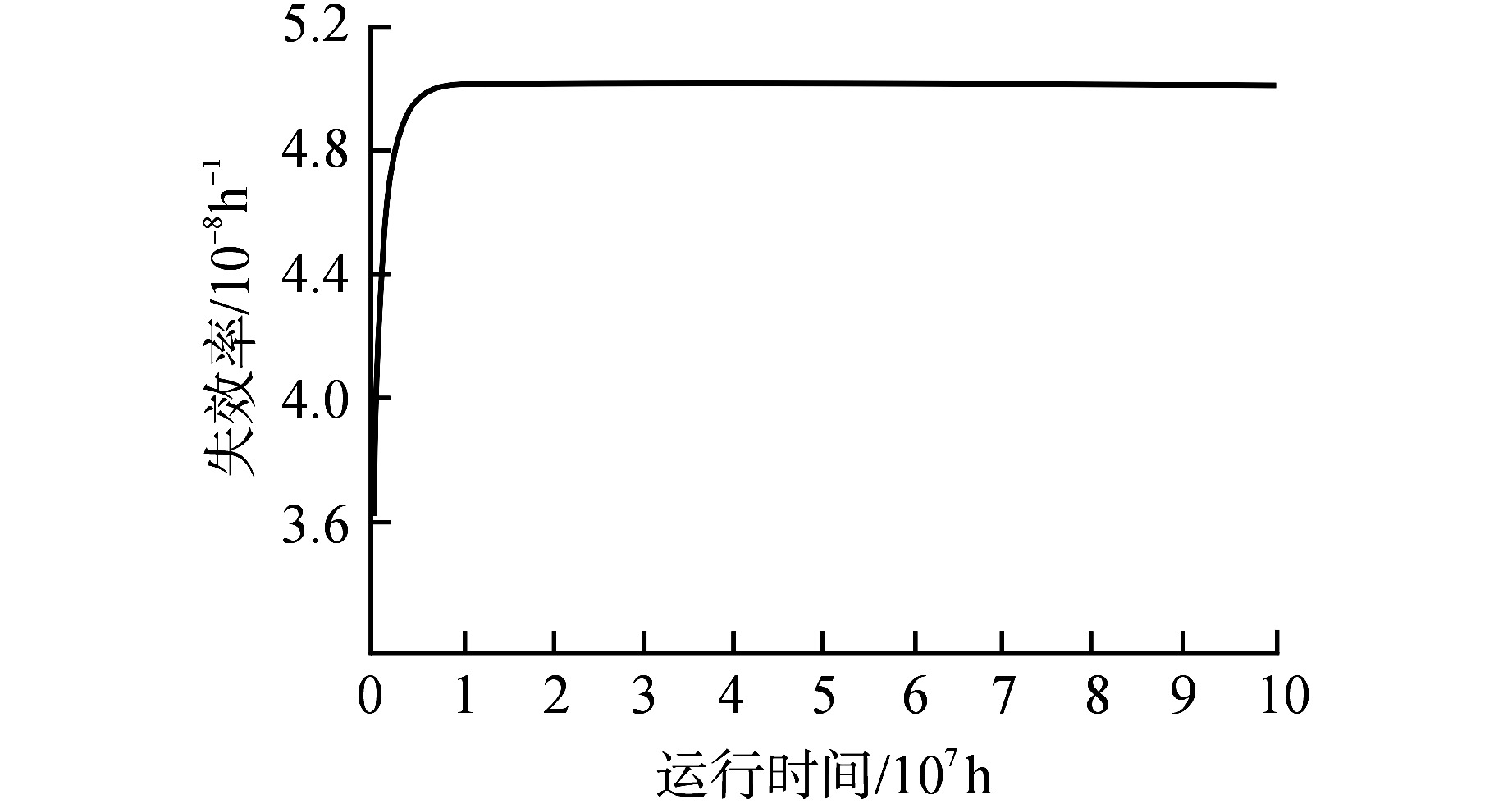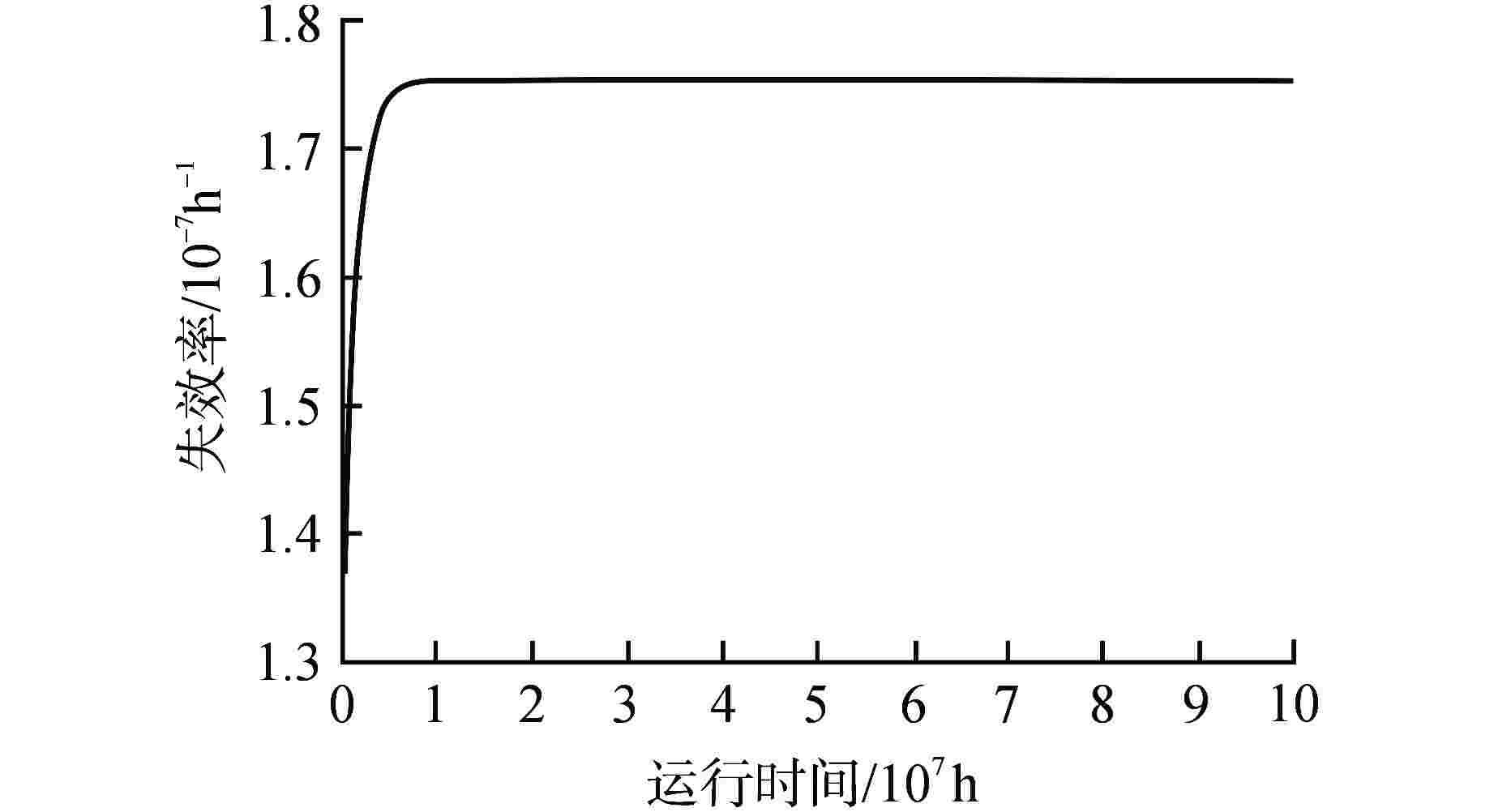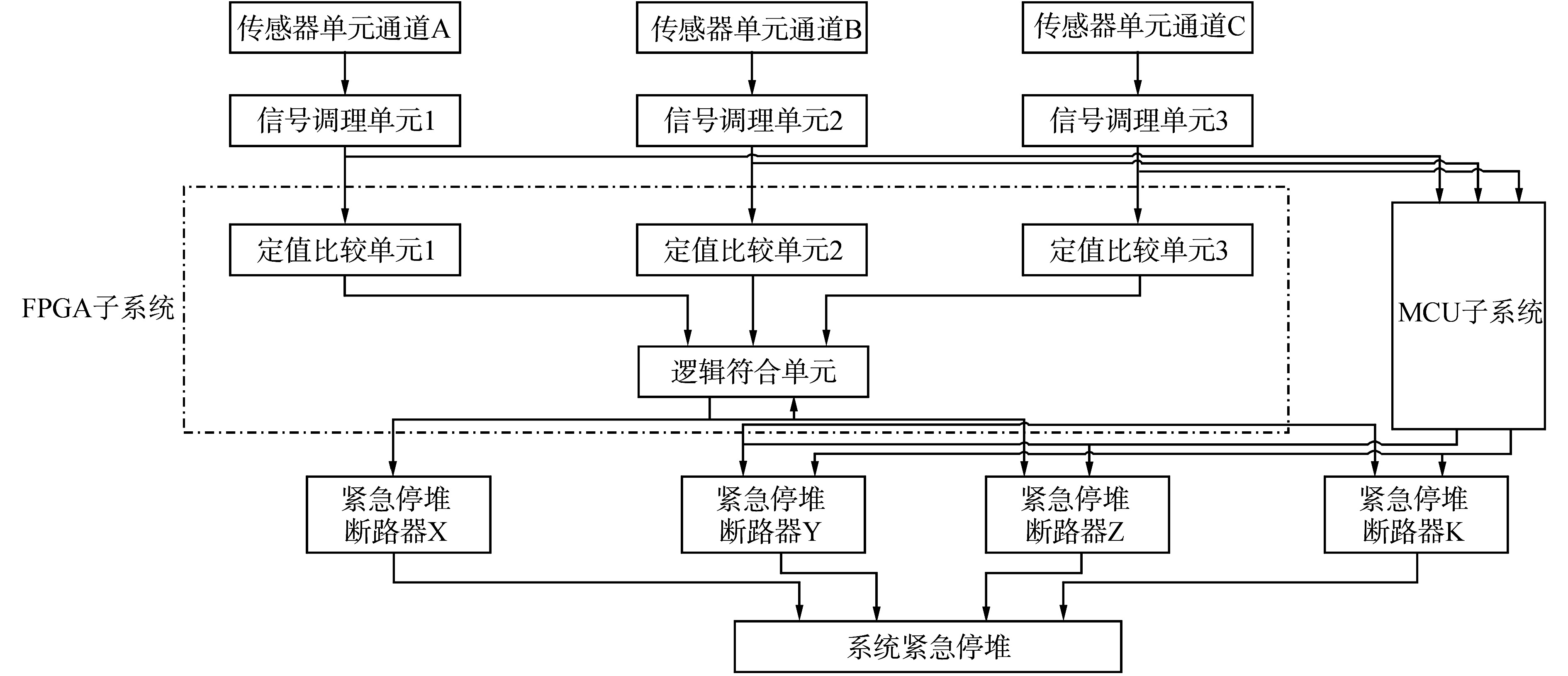Reliability Analysis of Digital Emergency Shutdown System Based on Markov/CCMT Method
-
摘要: 传统的可靠性分析方法在数字化仪控系统的可靠性应用中受到较多制约,需要探索新的可靠性分析方法。以数字化紧急停堆系统为研究对象,选取Markov/CCMT方法完成系统的失效建模,得到紧急停堆系统的定性分析结果;在此基础上进行定量分析以获得系统的失效率。结果表明,Markov/CCMT方法分析得到的数字化紧急停堆系统的失效率为1.3×10−6 h−1;Markov/CCMT方法在数字化仪控系统的可靠性分析中具备一定的适用性,相较于传统的可靠性分析方法对系统动态特性的表达更为全面。
-
关键词:
- 可靠性分析 /
- 数字化仪控系统 /
- Markov/CCMT方法
Abstract: Traditional reliability analysis methods are more restricted in the reliability application of digital I&C systems, and new reliability analysis methods need to be explored. Taking the digital emergency shutdown system as the research object, Markov/CCMT is selected to complete the failure modeling of the system, and the qualitative analysis result of the emergency shutdown system is obtained. On this basis, quantitative analysis is performed to obtain the failure rate of the system. The results show that the failure probability of the digital emergency shutdown system analyzed by the Markov/CCMT method is 1.3×10−6 h−1, and the Marko/CCMT method has certain applicability in the reliability analysis of the digital I&C system. Compared with the traditional reliability analysis method, Markov/CCMT method is more comprehensive in the expression of the dynamic characteristics of the system.-
Key words:
- Reliability analysis /
- Digital I&C system /
- Markov/CCMT method
-
表 1 系统单元及部件符号对应表
Table 1. Symbol Correspondence Table of System Units and Components
系统单元 部件名称 部件符号 传感器单元 通道A传感器 A1 通道B传感器 A2 通道C传感器 A3 信号调理单元 模拟量信号接收模块 B1 电流/电压(I/U)转换模块 B2 定值比较单元 输入输出模块 C1 模数(A/D)转换模块 C2 主中央处理器(CPU)模块 C3 备用CPU模块 C4 切换控制模块 C5 逻辑符合单元 输入输出模块 D1 数模(D/A)转换模块 D2 主CPU模块 D3 备用CPU模块 D4 切换控制模块 D5 紧急停堆断路器单元 停堆断路器X E1 停堆断路器Y E2 停堆断路器Z E3 停堆断路器K E4 表 2 紧急停堆系统吸收态
Table 2. Absorption State of Emergency Shutdown System
吸收态 失效单元及部件 吸收态 失效单元及部件 A′1A′2A3 传感器单元中任意2个通道传感器失效 D1D2D′3D′4D5 逻辑符合单元中CPU模块的任意2个处理器模块失效 A′1A2A′3 D1D2D′3D4D′5 A1A′2A′3 D1D2D3D′4D′5 B′1B2 信号调理单元中输入输出模块或I/U转换模块失效 D′1D2D3D4D5 逻辑符合单元中输入输出模块或D/A转换模块失效 B1B′2 D1D′2D3D4D5 C1C2C′3C′4C5 定值比较单元中CPU模块的任意2个处理器模块失效 E′1E′2E′3E4 断路器单元中任意3个停堆断路器失效 C1C2C′3C4C′5 E′1E2′E3E′4 C1C2C3C′4C′5 E′1E2E′3E′4 C′1C2C3C4C5 定值比较单元中输入输出模块或A/D转换模块失效 E1E′2E′3E′4 C1C′2C3C4C5 表 3 紧急停堆系统组件失效率
Table 3. Failure Probability of Emergency Shutdown System Components
组件名称 失效率/10−9 h−1 组件名称 失效率/10−9 h−1 信号触发断路器 166.7 模拟量输入模块 1100 触发停堆断路器 166.7 模拟量输出模块 1000 通信模块 850 数字量输入模块 650 紧急停堆按钮 800 数字量输出模块 750 安全触发器元件 1225 主CPU模块 573 通道A传感器 150 备用CPU模块 573 通道B传感器 150 切换模块 530 通道C传感器 150 A/D转换模块 480 I/U转换模块 100 D/A转换模块 480 -
[1] 杨军. 可靠性分析方法用于核电厂风险监测的研究[D]. 哈尔滨: 哈尔滨工程大学, 2016. [2] 陈培锋. 核电厂数字化仪控系统动态概率安全评价方法研究[D]. 厦门: 厦门大学, 2014. [3] ALDEMIR T. A survey of dynamic methodologies for probabilistic safety assessment of nuclear power plants[J]. Annals of Nuclear Energy, 2013(52): 113-124. doi: 10.1016/j.anucene.2012.08.001 [4] ALDEMIR T, GUARRO S, MANDELLI D, et a1. Probabilistic risk assessment modeling of digital instrumentation and control systems using two dynamic methodologies[J]. Reliability Engineering & System Safety, 2010, 95(10): 1011-1039. [5] SMIDTS C, DEVOOGHT J. Probabilistic reactor dynamics-II: a Monte Carlo study of a fast reactor transient[J]. Nuclear Science and Engineering, 1992, 11(3): 241-256. [6] ALDEMIR T, GUARRO S, KIRSCHENBAUM J, et al. A benchmark implementation of two dynamic methodologies for the reliability modeling of digital instrumentation and control systems: NUREG/CR-6985[R]. Washington, DC: Nuclear Regulatory Commission, 2009. [7] U. S. Nuclear Regulatory Commission. Severe accident risks: an assessment for five U. S. nuclear power plants: NUREG-1150[R]. Washington, DC: NRC, 1990. [8] ALDERNIR T, MILLER D, STOVSKY M, et al. Current state of reliability modeling methodologies for digital systems and their acceptance criteria for nuclear power plants: NUREG/CR-6901[R]. Washington, DC: USNRC, 2006. [9] 美国西屋公司. AP1000技术手册[Z]. 2011 [10] 核电有限公司. 田湾核电站用户手册[Z]. 2006 [11] TOMAS E, WIERMAN S T, BECK M B, et al. Reliability study: combustion engineering reactor protection system, 1984-1988: NUREG/CR-5500, INEL/EXT-97-00740, volume 10[R]. Washington, DC: NRC, 2001. -





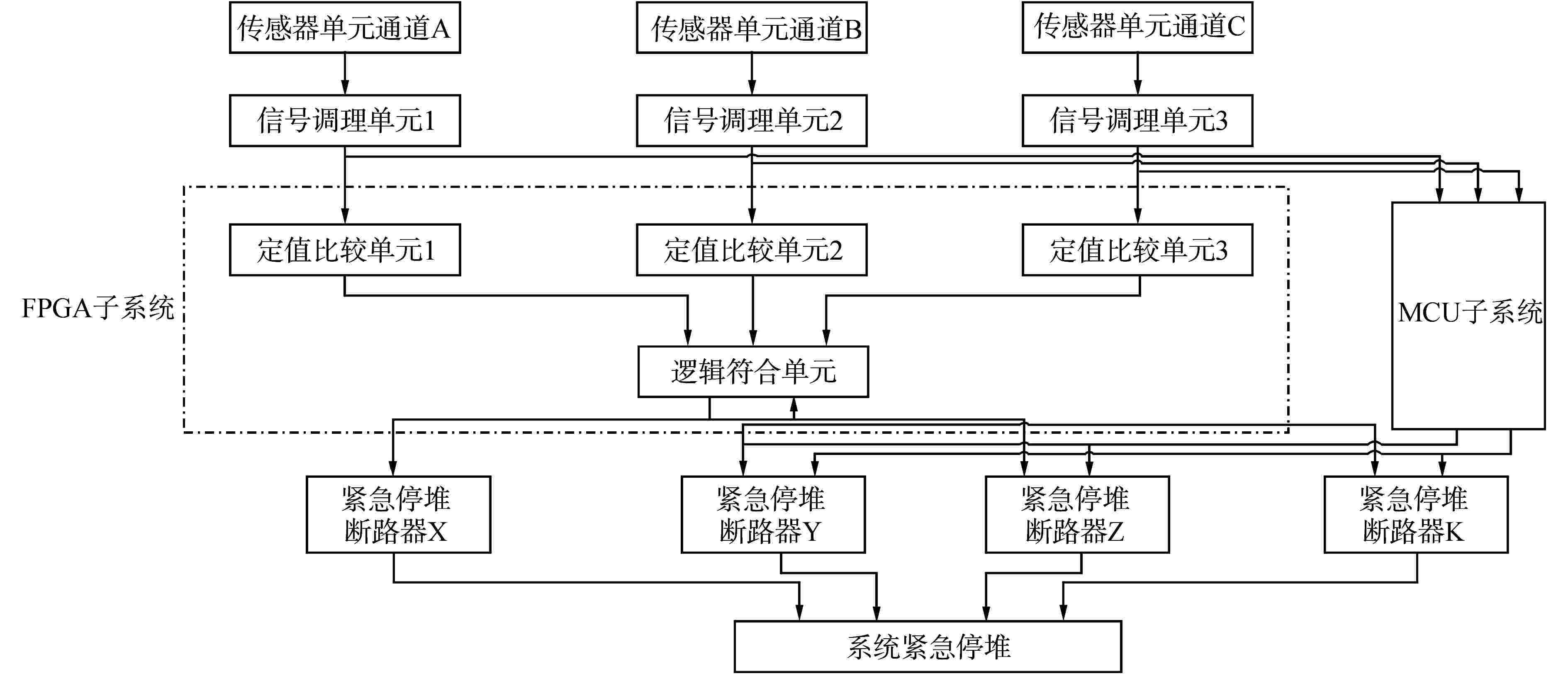
 下载:
下载:
